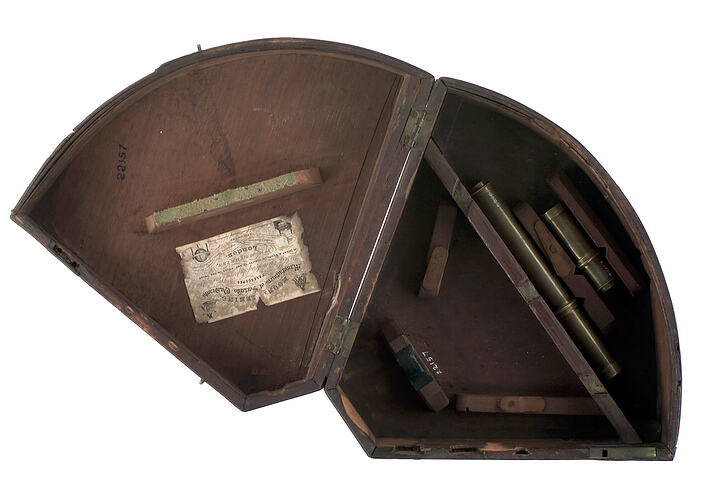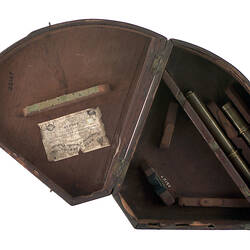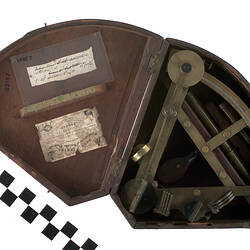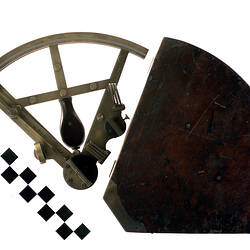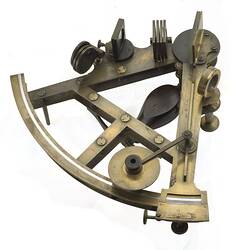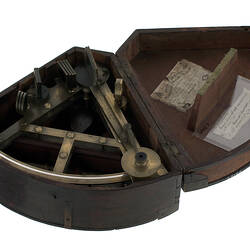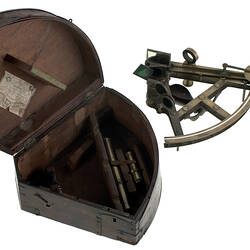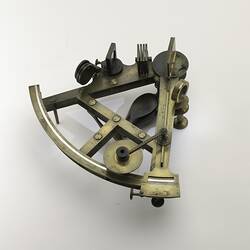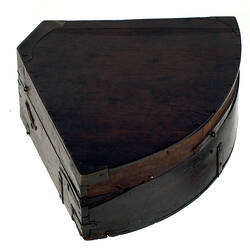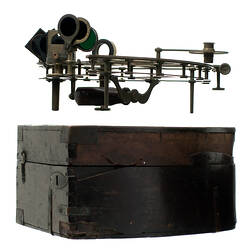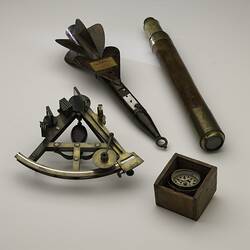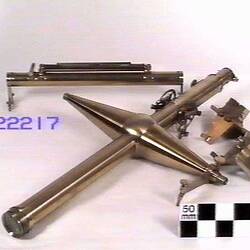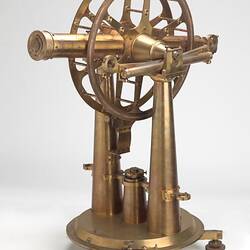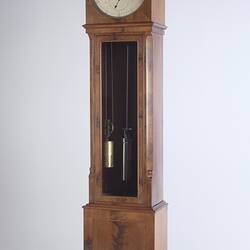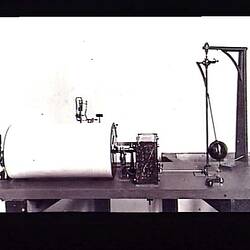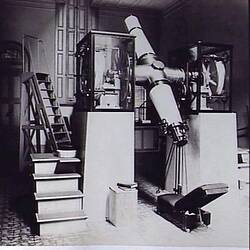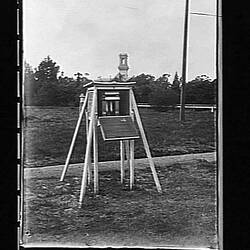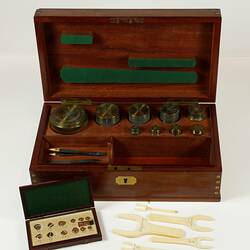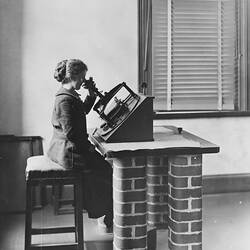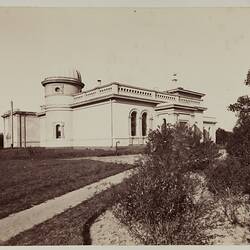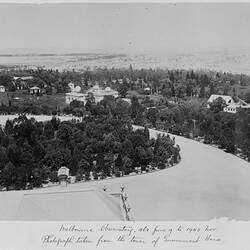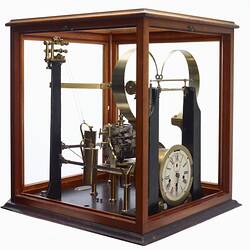Summary
Pillar frame sextant, with platinum scale, no 940, Troughton, London, circa 1820. In wooden case. Used at Melbourne Observatory.
A sextant measures the elevation of objects above the horizon.
Physical Description
Brass sextant in fitted wooden box, two interchangeable eyepieces, two sets of coloured filters. Graduated to 145 degrees. Silver scale inset. Arm has silver vernier & microscope.
Significance
This type of sextant was used by ship's navigators to measure angles between two points. Typically the altitude of the sun above the horizon was measured at noon, to determine the ship's latitude. Other observations of the moon and stars could be used to calculate longitude, using the lunar distance method. The sextant was developed in the 1770s and continued to be used into the 20th century.
This sextant was made in the workshop of Edward Troughton (1765-1835), one of England's leading scientific and astronomical instrument makers, in about 1820.
It is possibly one of the original sextants used when Williamstown Observatory was established near Melbourne in 1853. The observatory was created to provide an accurate time signal to ship captains and navigators. Providing precise local time enabled mariners to correct their ship chronometers after the long voyage from Europe; accurate chronometers and good quality sextants were essential for accurate and safe navigation across such long distances.
Astronomer Robert Ellery was appointed Superintendent of the Observatory and later recalled that initially he had only two chronometers, two 'indifferent' sextants, and an artificial horizon. If the Troughton sextant was one of the original instruments, it is likely that its 'indifferent' quality would have been due to slight damage to an otherwise quality instrument, which would have rendered the readings with it unreliable and slightly inaccurate.
More Information
-
Collection Names
-
Collecting Areas
-
Acquisition Information
Donation from Melbourne Observatory, 1945
-
Maker
Troughton, London, Middlesex, England, Great Britain, circa 1820
-
Retailer
-
User
Melbourne Observatory, South Yarra, Greater Melbourne, Victoria, Australia, post 1863
-
User (Possible)
-
Inscriptions
Scale inscribed "PLATINA TROUGHTON LONDON" Label in lid "MOON & LEMING".
-
Classification
-
Category
-
Discipline
-
Type of item
-
Overall Dimensions
26 cm (Length), 28 cm (Width), 9 cm (Height)
-
Keywords
Navigation Instruments, Sextants, Surveying Apparatus & Instruments
